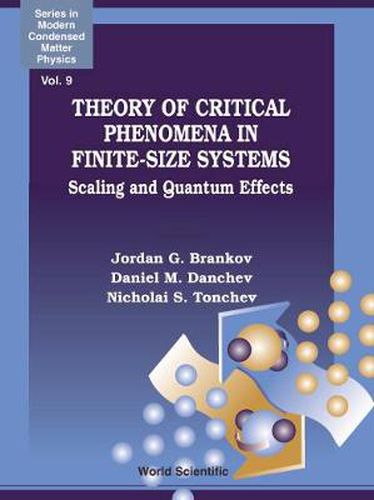Readings Newsletter
Become a Readings Member to make your shopping experience even easier.
Sign in or sign up for free!
You’re not far away from qualifying for FREE standard shipping within Australia
You’ve qualified for FREE standard shipping within Australia
The cart is loading…






The aim of this text is to familiarize the reader with the rich collection of ideas, methods and results available in the theory of critical phenomena in systems with confined geometry. The existence of universal features of the finite-size effects arising due to highly correlated classical or quantum fluctuations is explained by the finite-size scaling theory. This theory: offers an interpretation of experimental results on finite-size effects in real systems; gives the most reliable tool for extrapolation to the thermodynamic limit of data obtained by computer simulations; reveals the intimate mechanism of how the critical singularities build up in the thermodynamic limit; and can be fruitfully used to explain the low-temperature behaviour of quantum critical systems. The exposition is given in a self-contained form which presumes the reader’s knowledge only in the framework of standard courses on the theory of phase transitions and critical phenomena. The instructive role of simple models, both classical and quantum, is demonstrated by putting the accent on the derivation of rigorous and exact analytical results.
$9.00 standard shipping within Australia
FREE standard shipping within Australia for orders over $100.00
Express & International shipping calculated at checkout
The aim of this text is to familiarize the reader with the rich collection of ideas, methods and results available in the theory of critical phenomena in systems with confined geometry. The existence of universal features of the finite-size effects arising due to highly correlated classical or quantum fluctuations is explained by the finite-size scaling theory. This theory: offers an interpretation of experimental results on finite-size effects in real systems; gives the most reliable tool for extrapolation to the thermodynamic limit of data obtained by computer simulations; reveals the intimate mechanism of how the critical singularities build up in the thermodynamic limit; and can be fruitfully used to explain the low-temperature behaviour of quantum critical systems. The exposition is given in a self-contained form which presumes the reader’s knowledge only in the framework of standard courses on the theory of phase transitions and critical phenomena. The instructive role of simple models, both classical and quantum, is demonstrated by putting the accent on the derivation of rigorous and exact analytical results.